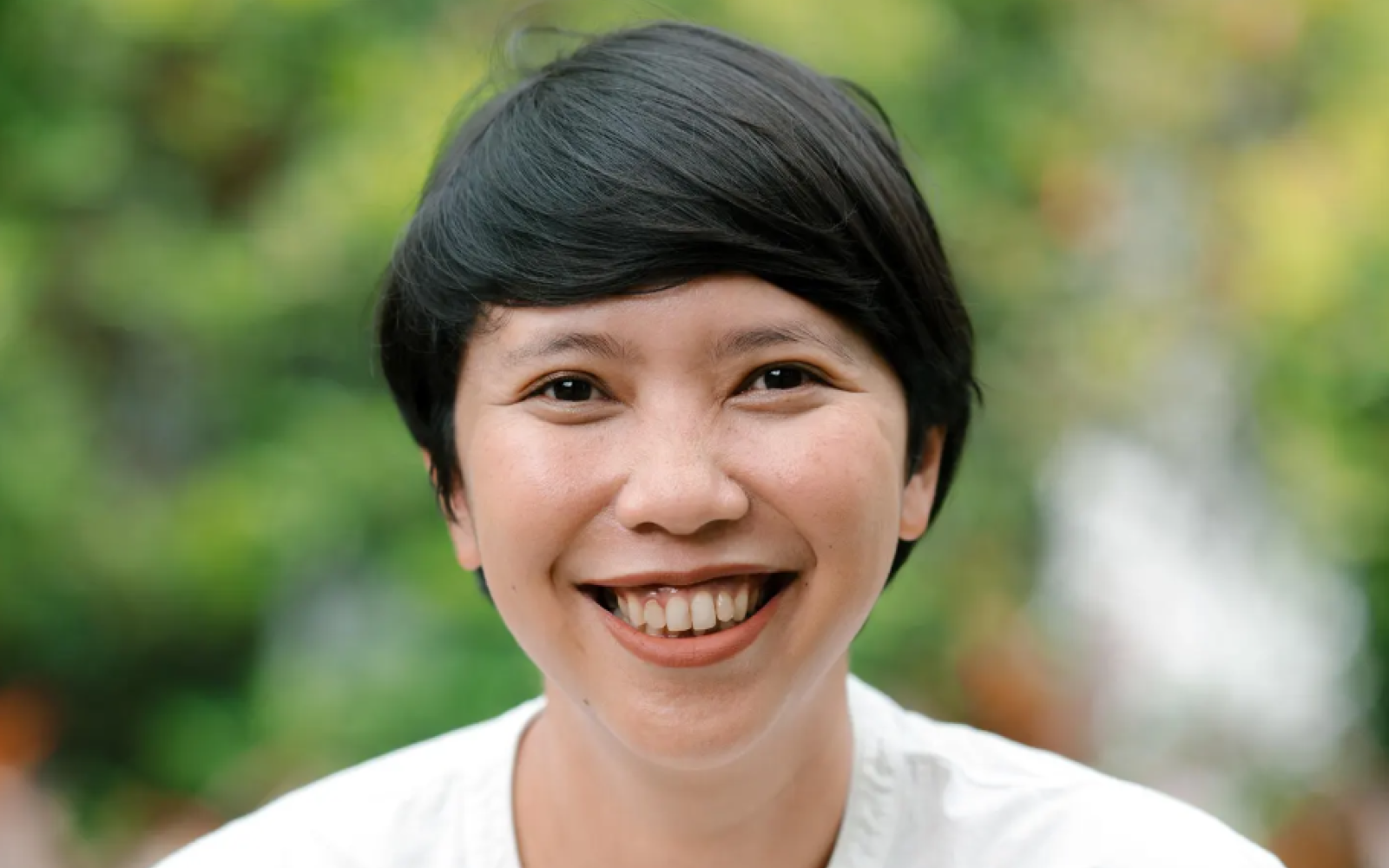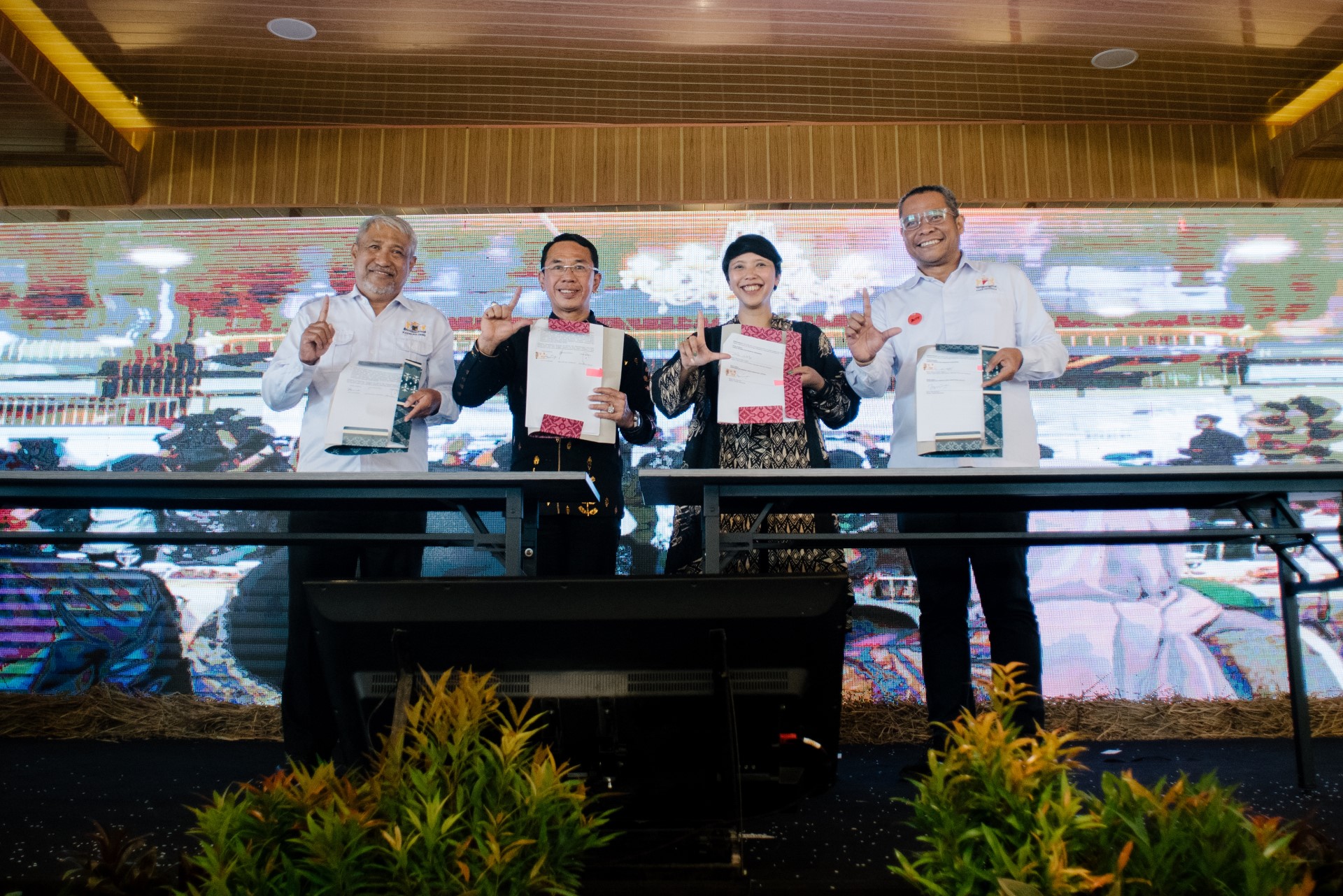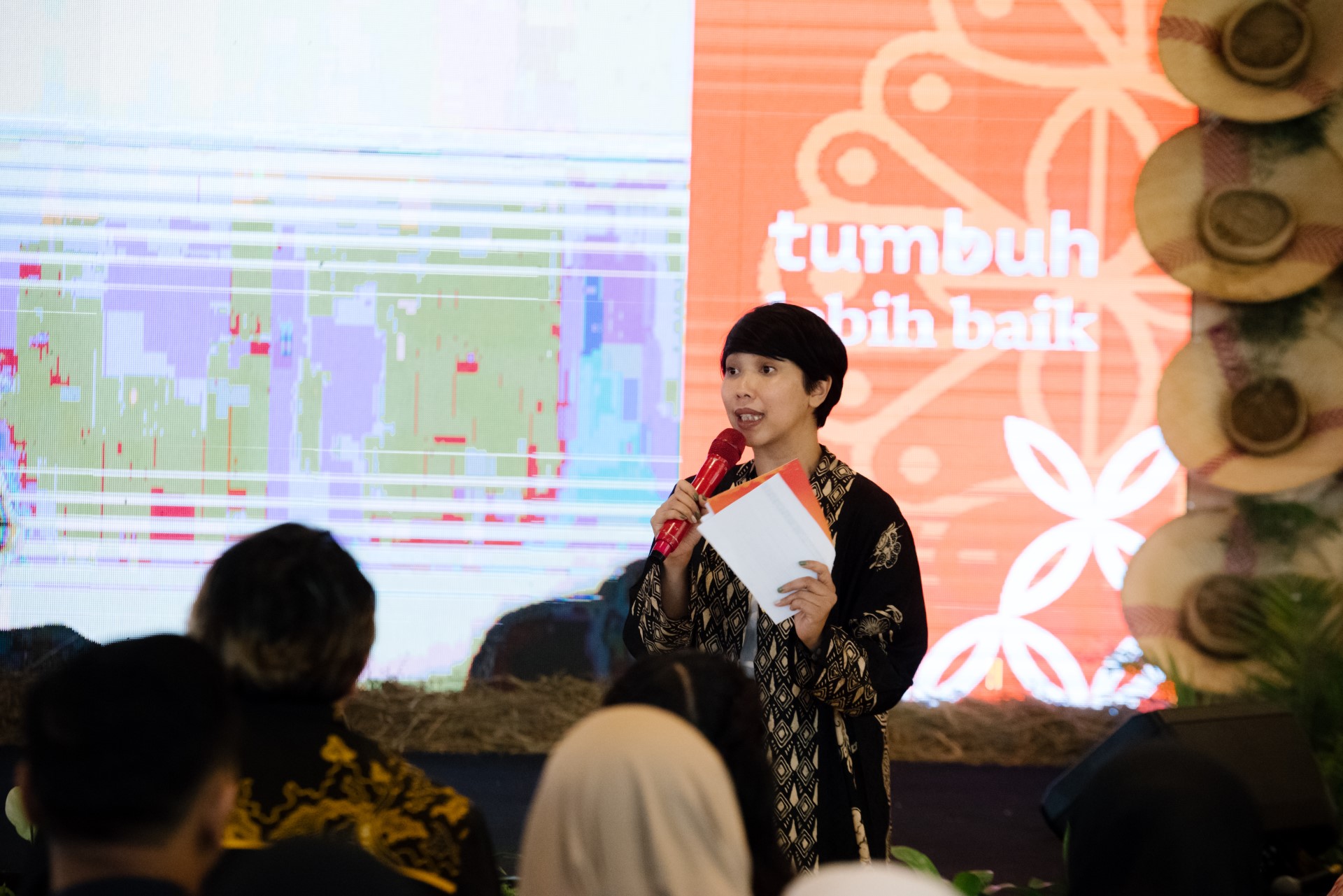
Lessons From Indonesia And Blueprints For A Regenerative Future
This interview features new Ashoka Fellow Gita Syahrani, whose stipend is covered by IKEA Social Entrepreneurship through the Dela programme. With vast tropical forests and more than one-third of the world’s tropical peatlands, Indonesia has an outsized role to play in protecting our planet. Here, we catch up with Gita Syahrani in Jakarta — a social entrepreneur and 2023 Climate Breakthrough Award winner. Speaking with Ashoka’s Simon Stumpf, she shares more on core memories, sustainable enterprises, and blueprints for a balanced future. Simon Stumpf: Gita, you are a real system entrepreneur — you navigate the big picture and nuts and bolts with ease. Let’s start with the big picture. What are you working on? Gita Syahrani: At the highest level, I want to help people unlock their core memories of nature and realize that nature is part of us – in our daily life, the way that we eat, the way that we travel, the way that we choose our clothing. When we remember how connected we are with nature, we start appreciating it more, looking for ways to contribute to restoring our world. Stumpf: How deep in your own experience do you have to go to unlock core memories? Syahrani: I got very lucky. I was brought up in a household with my mom and dad and also my grandma, an avid botanist. She would give me chores when I was a little kid. She taught me to talk to the plants, ask them how they feel, thank them, care for them. She told me they are the reason we are all still here. This is a kind of core memory – a soft memory that stayed with me and changed how I live. I believe that everybody has these, even our president or parliament member or teacher, or the CEO of an extractive company. Finding a systemic way to unlock these memories so people can act in their own way, to the best of their power and capacity – this is a goal of mine. Stumpf: And in fact, you design for solutions that can reach as many people as possible. Tell us more. Syahrani: Our work started because of a concrete need in 2015 – one of our biggest fire seasons in Indonesia. We lost people trapped in the fires and saw health conditions and economic hardships follow. So in 2016, several districts got together to design a development pathway that would protect important environmental ecosystems like our forests and peatlands, while uplifting the welfare and livelihoods of corn and palm oil farmers, fishing families, and others who live off the land. I was invited to help with this and tasked to act as the convener, helping to build and run the secretariat (membership organization). The main responsibilities of our secretariat are: co-create the strategy and pillars of transformation with the districts; connect the districts with the right implementation partners for collective action; and incentivize good behaviors and progress so everyone stays motivated. Stumpf: And today, who are your main partners? Public officials? Syahrani: Yes, but we look at districts as whole ecosystems. Not only the government officials from 13-15 different agencies but also leaders of the community, leaders of the civil society, young professionals, academics, the private sector, the small and medium scale enterprises. And we try to make sure everyone joins as people – more than just their job title. We want them to feel connected, so we can unlock many more answers and build development pathways that are not destructive or fractured by competing interests, but regenerative, holistic, long-term. Stumpf: There are hundreds of districts in Indonesia, yet 80 or so have a special significance here. Why is that? Syahrani: We are connected to the National Association of District Government that houses all districts in Indonesia, more than 400 kabupaten — districts. Our team acts as an accelerator with an expiration date in this ecosystem. By 2030, it’s expected that we will have proof of concept, a blueprint, that can be fully integrated across all districts. But right now membership in our association is intentionally small and limited to 10 kabupaten. As for your question, roughly 80 kabupaten have high forest and peat coverage, making them especially strategic. Take, for example, the district of Siak in Riau, a coastal province of Sumatra. Their territory is 57% peatland. Stumpf: Why are peatlands important? Syahrani: Peat is essentially hundred years’ worth of soil and natural elements packed together. Turns out, it can be one of the world's biggest weapons against the climate crisis because it has way more carbon storage potential than mineral soil. This was discovered only recently – the last ten years or so. But here’s the thing: peat must be kept moist. If it dries out, it’s highly flammable, and if it catches fire, the fire is actually smoldering – it’s inside the peat. Burning peat emits more carbon than any soil type. So we have to find ways to live with it and keep it wet, and not let it burn. Stumpf: Yet farmers might dry out their peatland or harvest the peat. And then we head towards this climate catastrophe you just described. Syahrani: Right. Peatlands are drained for economic purposes – to put in a plantation, for example, with the idea that the land will be more productive. But research shows you'll actually be operating at a loss because maintaining the water table will be too costly to support a viable plantation. Now that we know how precious peatlands are – for Indonesia, for the global climate – how can we help people find alternate livelihoods? Stumpf: Can you give an example? Syahrani: Sure. We first look for what’s already out there. For example, we pulled together a few technical partners and discovered an Indigenous custom of eating a specific type of fish, a corkfish, to speed recovery from surgery and childbirth. We learned that the fish is eaten as a soup for a month and people heal faster as a result. So we thought, maybe there's something here because if it's fish, then there's a reason to keep the peatland wet. And if you can find added value from that fish, then it's possibly a viable economic opportunity. So working with partners, we looked at that particular fish and why it’s effective. Turns out, it contains albumin, a restorative protein that can be extracted from corkfish living in healthy peat conditions. Syahrani: In this example, in 2020 the group formed the first community-based enterprise looking at this particular innovation. Our main task is then to work with them in getting an investment to build their own production facility, a license for nationwide distribution, and a long-term buyer. They also won an award from MIT SOLVE and the National SDGs Award. So it's working as a business and because it's working as a business, it becomes one of several points of reference for us to start spreading real news that if you keep the peat wet and there's fish there, then you can actually make the fish a viable business opportunity. Stumpf: So that’s a kind of blueprint that other districts can follow. This kind of sharing, it’s how the association members benefit from being in community. Is that right? Syahrani: Yes. So this is what we do – try to match, find ideas and innovation from the ground for value-added products and services along the same line as innovating for nature. Another important piece is alignment. We can’t have companies doing one thing and the government doing something completely different. So we bring all interests together, so we can divide and conquer as a collective. Various groups begin sharing a common goal, and even resources. Stumpf: The blueprint you describe is also dynamic – tell us how you see this informing the future. Syahrani: We look at the protection of nature as an opportunity, not a burden. By connecting districts with the right partners, it becomes a real thing. People can find careers through this opportunity. They can find life-long choices through this opportunity. We can unlock many more discoveries on the ground. And we can make sure everyone’s interests are being served while staying true to the end goal – executing the blueprint and finding a suitable development pathway. ______________________________________________________________________________ Ashoka & IKEA Social Entrepreneurship have co-created the Dela systems change programme, a global accelerator that supports leading social entrepreneurs in developing their impact and scale up their strategies. By working with social entrepreneurs, the programme is also a unique opportunity for IKEA co-workers to gain a more holistic insight into social entrepreneurship as well as get exposed to innovative models and ways of leading that can feed into their everyday work and corporate sustainability goals.
Stumpf: Part of your process is to help spot opportunities like this. What does it look like when communities start taking action?

